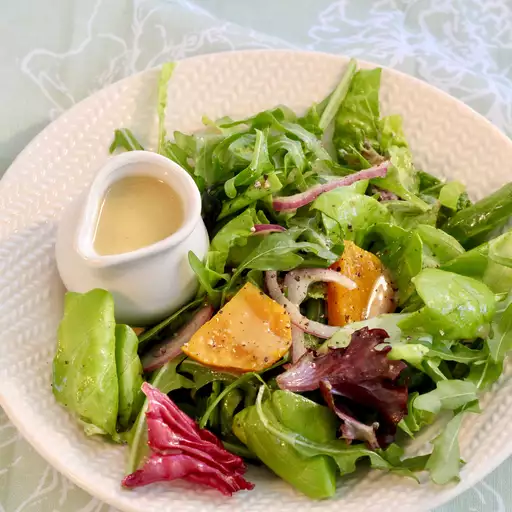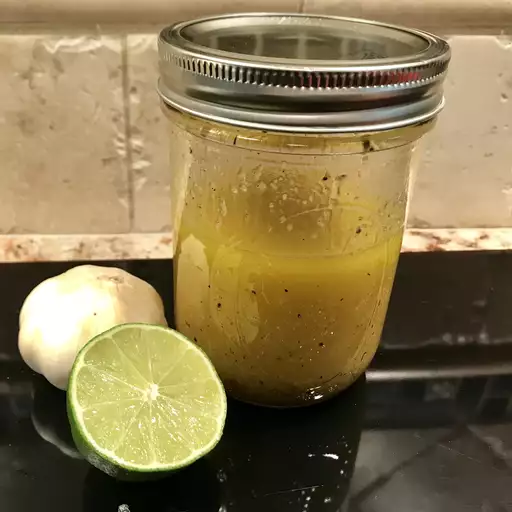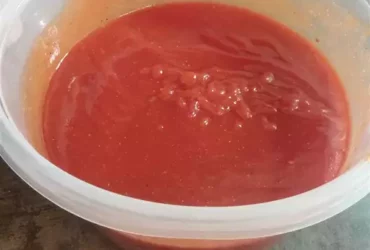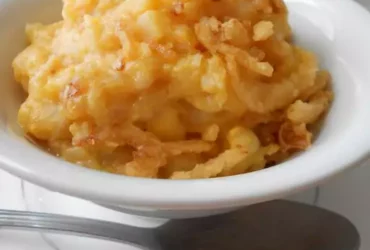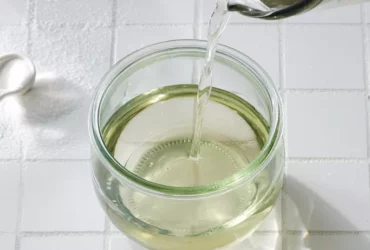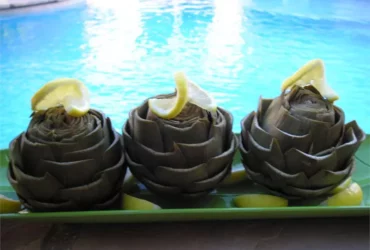Ingredients
Base of the Vinaigrette
The base of the vinaigrette in this Honey-Lime Vinaigrette recipe is a mixture of two liquids: oil and acid. The acid component is typically vinegar or another acidic ingredient, which helps to balance out the richness of the oil and adds depth to the flavor of the vinaigrette.
In this particular recipe, apple cider vinegar serves as the acid component. Apple cider vinegar has a mild, fruity flavor that complements the sweetness of the honey and the brightness of the lime juice. Other types of vinegar, such as balsamic or white wine vinegar, can also be used in place of apple cider vinegar to change the flavor profile of the vinaigrette.
The oil component is typically a neutral-tasting oil, such as canola or grapeseed oil, which helps to thin out the vinaigrette and add a smooth texture. In this recipe, the oil is combined with the honey and lime juice in a ratio of about 2:1, which means that for every two parts of oil, there is one part of acid.
The addition of Dijon mustard to the vinaigrette helps to emulsify the mixture and prevent it from separating. The Dijon mustard also adds a tangy flavor to the vinaigrette and helps to balance out the sweetness of the honey.
Finally, the recipe includes some grated lime zest for added brightness and flavor. The lime zest is incorporated into the vinaigrette just before serving, which ensures that it retains its potency and freshness.
The combination of these ingredients creates a balanced and refreshing vinaigrette that is perfect for salads, marinades, or as a dip for vegetables. The sweetness of the honey pairs well with the tartness of the lime juice and apple cider vinegar, while the Dijon mustard adds depth and richness to the flavor.
1/2 cup freshly squeezed lime juice
When it comes to making a delicious Honey-Lime Vinaigrette, the quality and freshness of the ingredients play a crucial role in bringing out the flavors and textures of this salad dressing.
The first key ingredient we’ll be focusing on is freshly squeezed lime juice.
Lime Juice
When selecting limes for juicing, look for those that are heavy for their size, with a thin, smooth skin and no signs of wrinkles or soft spots. This will ensure the best flavor and aroma.
Juice your limes immediately before using them, as fresh lime juice has a shorter shelf life than bottled lime juice. You can use a manual or electric juicer to extract the juice from the lime halves.
For every one cup of lime juice required in the recipe, you’ll need about six to eight medium-sized limes, depending on their size and juiciness.
In terms of using freshly squeezed lime juice instead of bottled or packaged lime juice, the differences are quite significant:
- Freshly squeezed lime juice has a more vibrant citrus flavor and aroma compared to bottled lime juice, which can have a slightly stale taste.
- Fresh lime juice is also less likely to contain added sugars or preservatives, making it a healthier option for those watching their diet.
- Lastly, using fresh lime juice allows you to customize the amount of acidity and flavor in your Honey-Lime Vinaigrette according to your taste preferences.
In conclusion, incorporating freshly squeezed lime juice into your Honey-Lime Vinaigrette recipe will elevate its overall flavor profile and texture. Its unique characteristics make it an ideal addition to this salad dressing, offering a tangy and refreshing twist that complements the sweetness of honey perfectly.
1/4 cup apple cider vinegar or white wine vinegar
In this recipe, we will be using a key ingredient that adds depth and flavor to our Honey-Lime Vinaigrette – vinegar.
The type of vinegar used in this recipe can have a significant impact on the overall taste and character of the vinaigrette.
We are specifying two types of vinegar that you can use: apple cider vinegar or white wine vinegar.
Both of these options will work well, but they each bring a unique flavor profile to the table.
Apple cider vinegar has a sweeter and milder flavor compared to other types of vinegar. It is made from fermented apples and has a hint of fruitiness.
This type of vinegar pairs particularly well with the sweetness of honey and the brightness of lime juice in this recipe.
On the other hand, white wine vinegar has a sharper and more acidic flavor. It is made by fermenting white wine and has a cleaner taste compared to apple cider vinegar.
This option will add a bit more complexity and interest to the vinaigrette, making it suitable for those who prefer a stronger vinegar flavor.
For this recipe, we recommend using 1/4 cup of either type of vinegar. This amount provides enough acidity to balance out the sweetness of the honey without overpowering the other flavors in the dish.
You can adjust the amount to your taste preferences, but keep in mind that too much vinegar can make the vinaigrette too acidic and unbalanced.
Pungency and Flavor Enhancers
- In the realm of culinary arts, Ingredients play a vital role in shaping the taste and aroma of a dish.
- When it comes to creating a harmonious flavor profile, Pungency and Flavor Enhancers come into play.
Pungency
Pungency refers to the sharp, piquant, or piercing quality of a flavor component.
It is often associated with spices and seasonings that add depth and intensity to a dish.
- Garlic: Known for its strong, sulfurous flavor, garlic adds pungency to many recipes.
- Onion: Whether sautéed or caramelized, onions bring a sweet and savory pungency to dishes.
- Ginger: With its spicy, warming flavor, ginger is a popular choice for adding pungency to Asian-inspired recipes.
Flavor Enhancers
Flavor enhancers are compounds that amplify or modify the existing flavors in a dish without significantly altering their taste.
- Honey: With its sweet, viscous texture and subtle flavor, honey is a popular choice for adding depth to dressings and marinades.
- Citric Acid (e.g., from lime juice): This acidic compound enhances the perception of sweetness and balances flavors in a dish.
- Herbs and Spices: Many herbs and spices, such as thyme, rosemary, or cumin, have a unique ability to amplify flavors without adding significant pungency.
Honey-Lime Vinaigrette Recipe
This refreshing dressing is an excellent example of how to combine pungent ingredients with flavor enhancers to create a harmonious and delicious taste experience.
To make this recipe, you will need:
- 1/2 cup olive oil
- 1/4 cup white wine vinegar
- 2 cloves garlic, minced
- 1 tablespoon Dijon mustard
- 1 teaspoon honey
- 1/4 cup lime juice (freshly squeezed)
This dressing is a perfect accompaniment to salads, grilled meats, or roasted vegetables. Feel free to adjust the amount of pungent ingredients and flavor enhancers to suit your personal taste preferences.
2 cloves garlic, minced
When it comes to the Honey-Lime Vinaigrette Recipe, one essential ingredient is 2 cloves of garlic, minced. Garlic is a fundamental flavor component in many recipes, including salad dressings and marinades.
The key characteristic of garlic used in this recipe is its pungency and aroma. Minced garlic allows it to dissolve into the dressing easily, imparting its unique taste without overpowering other ingredients.
Here’s why 2 cloves are specified: using too little garlic might not provide enough depth of flavor for the Honey-Lime Vinaigrette, while more than 2 cloves could be overwhelming and make the dressing bitter. The right amount balances out the sweetness from honey with a touch of savory flavor.
Some tips to keep in mind when working with garlic:
- Select fresh, firm bulbs for the best taste.
- Mince the garlic just before adding it to the dressing to prevent its flavor from dissipating quickly.
- Be mindful of how you chop or mince the garlic: finer pieces will blend into the mixture more easily, while larger pieces might not distribute evenly.
The minced garlic is mixed with other ingredients like honey, lime juice, olive oil, and herbs to create a well-rounded vinaigrette for salads. This combination of flavors makes Honey-Lime Vinaigrette a versatile condiment suitable for various dishes beyond salads.
1 teaspoon Dijon mustard
Dijon mustard is a type of prepared mustard that originates from the city of Dijon, France.
It is made from brown or black mustard seeds that have been ground and mixed with white wine, vinegar, salt, and spices.
The unique flavor profile of Dijon mustard comes from its use of whole-grain mustard seeds, which give it a slightly coarse texture and a more complex taste compared to yellow mustard.
One teaspoon of Dijon mustard is typically used as a condiment or ingredient in various recipes, including salad dressings like the Honey-Lime Vinaigrette Recipe mentioned here.
In this recipe, Dijon mustard adds a tangy and slightly spicy flavor that complements the sweetness of honey and lime juice perfectly.
The acidity in the vinegar used to make Dijon mustard helps balance out the richness of other ingredients, such as olive oil and honey, creating a well-rounded taste experience.
Oil Component
The ingredients used in traditional Honey-Lime vinaigrette recipes typically include a combination of acidic, sweet, and flavor-enhancing components.
For the oil component, various types of oil can be utilized, such as olive oil, vegetable oil, or grapeseed oil, to name a few. The choice of oil often depends on personal preference and the desired flavor profile.
The neutral flavor of oils like canola oil or safflower oil makes them suitable for vinaigrette dressings, as they allow the other flavors to shine through without overpowering the taste. In contrast, a lighter olive oil may be used when a slightly nutty flavor is desired.
The primary function of oil in vinaigrettes is to provide a lubricating effect on the palate and balance out the flavors with its richness and texture. Therefore, it’s essential to choose an oil that complements rather than overpowers the other ingredients.
1/4 cup neutral tasting oil such as grapeseed or canola
The first ingredient we’ll be using to make our delicious Honey-Lime Vinaigrette recipe is a neutral-tasting oil, which serves as the base for the vinaigrette. Neutral-tasting oils have a mild flavor that won’t compete with or overpower the other ingredients in the dressing.
Two options mentioned as suitable alternatives are grapeseed and canola oil. Grapeseed oil has a light, neutral taste that pairs well with delicate flavors, while canola oil is also known for its mild flavor and high smoke point, making it ideal for high-heat cooking and dressings.
When selecting the perfect neutral-tasting oil for your Honey-Lime Vinaigrette, consider the flavor profile you’re aiming to achieve. If you want a lighter, more delicate taste, grapeseed might be the better choice. On the other hand, if you prefer a slightly stronger yet still neutral flavor, canola oil could work just as well.
It’s worth noting that other neutral-tasting oils like sunflower or safflower oil can also be used in place of grapeseed or canola oil, depending on your personal preference and the specific flavor profile you’re aiming to achieve. However, for a classic Honey-Lime Vinaigrette recipe, one of these two options is usually sufficient.
Instructions
Blending the Ingredients
To blend the ingredients for the Honey-Lime Vinaigrette recipe, you will need to follow these steps carefully and ensure that all the components are combined thoroughly.
First, start by pouring the freshly squeezed lime juice into a blender or food processor. The exact amount of lime juice required may vary depending on personal taste preferences, but generally 1/4 cup should be sufficient for most recipes.
Next, add in 2 tablespoons of pure honey to the blender. Honey adds a rich, sweet flavor to the vinaigrette and helps balance out the acidity of the lime juice.
Follow this by adding 2 cloves of minced garlic to the blender. Garlic has numerous health benefits and contributes an unmistakable flavor profile that pairs well with the sweetness of honey.
Mix in 1/4 teaspoon of salt to enhance the overall taste experience. The amount of salt used can be adjusted according to individual preferences, but it’s crucial to maintain a balance between flavors for an optimal outcome.
Lastly, slowly pour 3/4 cup of olive oil into the blender while continuously processing its contents at a low speed. Be cautious not to introduce excessive air into the mixture by using a slow and steady pouring action.
The total blending time may range anywhere from 30 seconds to a minute and a half, depending on the chosen device’s power settings or your personal preference for smoothness levels in the finished vinaigrette.
As you continue to blend the mixture, stop periodically to check its consistency and make any necessary adjustments to achieve an even distribution of all ingredients. Remember that the resulting texture should ideally resemble a fine emulsion where no visible oil droplets remain.
In a blender or food processor, combine lime juice, apple cider vinegar or white wine vinegar
To make this delicious and tangy Honey-Lime Vinaigrette, follow these steps carefully:
First, in a blender or food processor, combine the following ingredients to create the base of your vinaigrette:
- Lime juice: Freshly squeezed lime juice adds a bright and citrusy flavor. Use about 2-3 tablespoons for this recipe.
- Apple cider vinegar or white wine vinegar: These vinegars provide a tangy and slightly sweet base for your vinaigrette. Choose one that suits your taste, but keep in mind that apple cider vinegar will give a milder flavor.
Next, add the following ingredients to enhance the flavor of your Honey-Lime Vinaigrette:
- Honey: This sweetener adds depth and warmth to your vinaigrette. Use about 1-2 tablespoons for this recipe.
- Garlic powder or minced garlic: A pinch of garlic powder or a few cloves of minced garlic will add a savory flavor to your vinaigrette.
- Dried herbs: Chopped fresh herbs like parsley, cilantro, or dill can be used in place of dried herbs. However, if using dried herbs, use about 1/4 teaspoon for this recipe.
Now, blend all the ingredients together until smooth and well combined:
- Add a pinch of salt to bring out the flavors.
- Blend on high speed for about 10-15 seconds or until you reach your desired consistency.
Taste and adjust the vinaigrette as needed:
- Add more lime juice, honey, or salt to taste.
- Adjust the ratio of lime juice to vinegar for a sweeter or tangier flavor.
Store your Honey-Lime Vinaigrette in an airtight container in the refrigerator:
- Mix well before serving, as the flavors may separate over time.
- Use within a week for optimal flavor and freshness.
This delicious Honey-Lime Vinaigrette is perfect for salads, marinades, or dips. Enjoy!
Add garlic and Dijon mustard; process until well combined
To make this delicious Honey-Lime Vinaigrette, follow these easy steps to combine the ingredients and achieve a well-balanced flavor.
The first step in creating this vinaigrette is to add the garlic and Dijon mustard. This will provide a pungent aroma and a tangy kick that will enhance the overall taste of the dressing.
When adding the garlic, it’s essential to mince or finely chop it before incorporating it into the mixture. This ensures that the flavor is evenly distributed throughout the vinaigrette.
The next ingredient to add is Dijon mustard. Dijon mustard has a slightly sweeter and less spicy flavor profile compared to traditional yellow mustard, making it an excellent addition to this recipe. Mix the garlic and mustard together until they are fully incorporated into each other.
Once you have combined the garlic and mustard, proceed with adding the lime juice and honey. The acidity in the lime juice will help balance out the sweetness of the honey, creating a smooth and creamy texture.
When combining these ingredients, make sure to process them until they are well mixed and there are no visible lumps or separation between the different components. This can be achieved using a blender, food processor, or even a whisk in a pinch.
As you continue processing the mixture, pay attention to its consistency. The Honey-Lime Vinaigrette should have a smooth and thick texture that’s perfect for drizzling over salads or vegetables. If it becomes too thin, add more honey; if it becomes too thick, add a little more lime juice.
Finally, taste the vinaigrette to ensure it has achieved the desired level of flavor and consistency. Adjust any seasonings as needed before serving.
Dressing Preparation and Storage
To prepare the Honey-Lime Vinaigrette recipe, it’s essential to follow a series of instructions that will guide you through dressing preparation and storage. These steps are crucial in ensuring that your vinaigrette turns out fresh, flavorful, and safe for consumption.
First and foremost, ensure that all utensils and equipment are thoroughly cleaned and sanitized before use. This includes the blender or food processor, measuring cups and spoons, and any other containers that will be used to prepare and store the vinaigrette.
The ingredients required for this recipe include freshly squeezed lime juice, honey, Dijon mustard, salt, black pepper, garlic powder, and olive oil. It’s crucial to use high-quality ingredients, as they will significantly impact the flavor profile of your vinaigrette.
To prepare the dressing, start by juicing the limes and measuring out 1/4 cup of freshly squeezed juice. Next, measure out 2 tablespoons of honey and add it to a blender or food processor along with the lime juice, Dijon mustard, salt, black pepper, and garlic powder.
Blend these ingredients on high speed until they are well combined and the mixture is smooth. This may take a few minutes, depending on your equipment’s power and the thickness of the mixture.
Once the mixture has been blended to your liking, slowly add in the olive oil while continuing to blend on high speed. Be cautious not to add the oil too quickly, as this can result in an overly emulsified dressing that separates easily.
To store the vinaigrette, transfer it to a clean glass jar or container with a tight-fitting lid. Store the jar in the refrigerator at a temperature of 40°F (4°C) or below. Before using the vinaigrette, allow it to sit at room temperature for about 30 minutes to allow the flavors to meld together.
When storing the vinaigrette, make sure that the container is properly sealed and protected from light. Light can cause the flavor compounds in the dressing to degrade over time, resulting in a less flavorful product. In addition, be aware of any contaminants or moisture that could seep into the jar and spoil the dressing.
As with any perishable food item, it’s essential to consume your Honey-Lime Vinaigrette within a reasonable timeframe. If stored properly in the refrigerator, this vinaigrette can last for up to 2 weeks. After this time, its flavor may begin to degrade, and it’s best to discard it and prepare a fresh batch.
With the blender running, slowly pour in the neutraltasting oil through the top
To prepare the Honey-Lime Vinaigrette, it’s essential to follow a precise sequence of steps, particularly when incorporating the neutral-tasting oil into the mixture.
Start by having all the ingredients ready and within reach, including the honey, lime juice, Dijon mustard, garlic powder, salt, and black pepper. It’s also crucial to have the blender or food processor set up and at a comfortable height for easy access.
Begin by blending together the honey, lime juice, Dijon mustard, garlic powder, salt, and black pepper on high speed until well combined and smooth. This may take about 10-15 seconds, depending on the power of your blender or food processor.
While the blender is still running, slowly pour in the neutral-tasting oil through the top. It’s essential to maintain a consistent flow rate to avoid creating air pockets within the mixture. Start with a slow drizzle and gradually increase the flow as the blender continues to run, ensuring that the oil is fully incorporated.
Continue blending the vinaigrette for an additional 10-15 seconds to emulsify the mixture thoroughly. You should start to notice a smooth and creamy texture developing.
Finally, stop the blender and pour the Honey-Lime Vinaigrette into a serving container or airtight jar. Store any leftovers in the refrigerator for up to 5 days. Before using, give the vinaigrette a good stir to re-emulsify it.
The resulting Vinaigrette will have a perfect balance of sweet and tangy flavors, making it an excellent addition to various salads, grilled meats, or as a dip for vegetables.
Taste and adjust seasoning as needed; store in an airtight container in the refrigerator for up to 5 days
The instructions for storing and maintaining the quality of the Honey-Lime Vinaigrette recipe are as follows:
After preparing the vinaigrette, it’s essential to check its taste and adjust the seasoning accordingly. This step ensures that the flavors are balanced and satisfying. If necessary, add a pinch of salt or a squeeze of lime juice to enhance the flavor.
Once the seasoning has been adjusted to your liking, store the Honey-Lime Vinaigrette in an airtight container in the refrigerator. This will prevent contamination and spoilage, allowing you to enjoy it for a longer period.
The storage guidelines specify that the vinaigrette can be safely stored in the refrigerator for up to 5 days. It’s crucial to adhere to this time frame to ensure the best flavor and texture.
When storing the vinaigrette, make sure the container is tightly sealed to prevent exposure to air, which can cause oxidation and alter the flavor. If you plan to store it for an extended period, consider using a smaller container or dividing it into smaller portions to maintain its quality.
Tips for Storing Honey-Lime Vinaigrette
- Check the vinaigrette’s flavor and adjust seasoning as needed before storing it in the refrigerator.
- Store the vinaigrette in an airtight container to prevent contamination and spoilage.
- Maintain the vinaigrette in the refrigerator at all times.
- Check and adjust the seasoning again if you plan to store it for more than 3 days.
Why is proper storage important?
Proper storage of Honey-Lime Vinaigrette is crucial to maintain its flavor, texture, and quality. Exposure to air, heat, or moisture can cause the vinaigrette to spoil, resulting in an unpleasant taste and potentially unsafe consumption. By following the storage guidelines, you can enjoy your homemade vinaigrette for a longer period and ensure it remains fresh and flavorful.
Considerations for Optimal Flavor
Acidity Levels
When it comes to achieving optimal flavor and acidity levels in a Honey-Lime Vinaigrette recipe, several considerations come into play.
Firstly, the ratio of ingredients is crucial in determining the balance of flavors.
- The acid level should be around 5-7% of the total volume to provide a tangy and refreshing taste without overpowering the sweetness of the honey.
The type and amount of vinegar used can greatly impact acidity levels.
- Rice vinegar or white wine vinegar with a mild flavor profile work well in this recipe, as they won’t compete with the lime juice for attention.
- For an average batch of honey-lime vinaigrette, use about 1-2 tablespoons (15-30 ml) of vinegar per cup (240 ml).
The sweetness level also plays a significant role in balancing acidity and overall flavor.
- Honey is the primary sweetener in this recipe, adding depth and warmth to the dressing.
- Use high-quality, pure honey that has not been filtered or pasteurized, as it will retain more of its natural nutrients and flavors.
The lime juice content can vary depending on personal taste preferences.
- A good starting point is to use about 2-3 tablespoons (30-45 ml) of freshly squeezed lime juice per cup (240 ml).
- You may adjust this amount according to how tart you like your vinaigrette and the strength of your lime flavor.
Finally, consider the emulsifying agents that will help to combine the ingredients smoothly and evenly.
- Dijon mustard or whole-grain mustard can be used as a thickening agent, adding a subtle spicy kick to the vinaigrette.
- About 1 teaspoon (5 ml) of mustard per cup is sufficient, but feel free to adjust according to your preference for heat and texture.
The acidity level of this vinaigrette is achieved by the combination of lime juice and vinegar; balance these components according to taste
To achieve optimal flavor in a honey-lime vinaigrette, it’s essential to balance the acidity level with the sweetness and richness of the other components.
The acidity level of this vinaigrette is achieved by the combination of lime juice and vinegar, which provides a tangy and refreshing taste. To balance these components according to taste, start by tasting the vinaigrette as you go, adding more lime juice or vinegar as needed to achieve your desired level of acidity.
Next, consider the sweetness level. Honey is a key ingredient in this recipe, and its sweetness should be balanced against the acidity. If you prefer a sweeter vinaigrette, add a bit more honey; if you prefer it tangier, use less.
The ratio of lime juice to vinegar can also impact the flavor. A classic combination for a vinaigrette is 3 parts acid (lime juice and vinegar) to 1 part oil, but feel free to adjust this ratio based on your personal taste preferences.
Another consideration for optimal flavor is the quality of the ingredients used. Fresh lime juice is essential in this recipe, so be sure to use high-quality limes and extract the juice yourself rather than relying on bottled juice.
Finally, don’t forget about the flavor enhancers like salt and black pepper. A pinch of salt can bring out the flavors in the vinaigrette and balance the sweetness and acidity, while a few grinds of black pepper can add depth and warmth to the flavor profile.
By carefully balancing the acidity level, sweetness level, and other components, you’ll be able to create a honey-lime vinaigrette that’s perfect for salads, grilled meats, or as a dip for vegetables.
Olive Oil vs. Neutral-Tasting Oils
The key to an exceptional honey-lime vinaigrette lies not only in its ingredients but also in the type of oil used. When it comes to creating a balanced flavor profile, olive oil can be both beneficial and limiting.
On one hand, extra virgin olive oil is a popular choice for many recipes due to its distinct, fruity flavor. However, this bold taste may clash with other ingredients, overpowering the delicate essence of honey and lime in the vinaigrette. In contrast, neutral-tasting oils allow these flavors to shine without any distracting undertones.
Some alternatives to consider include avocado oil or grapeseed oil, both of which possess a light, buttery taste that complements citrus notes. Avocado oil, in particular, boasts an exceptionally mild flavor profile and high smoke point, making it ideal for both cooking and dressing salads.
When opting for olive oil instead, consider using a lighter variety such as Arbequina or Koroneiki, which offer more subtle flavors than some other types of olive oil. However, even these milder oils may still disrupt the balance in this specific vinaigrette recipe.
To maintain optimal flavor, it’s crucial to remember that different types of oil have varying levels of acidity, which can impact the taste and texture of your dish. A general rule of thumb is that oils with lower acidities tend to be more suitable for delicate flavors like honey and lime. Avocado oil, with its very low acidity, stands out as an excellent choice in this context.
If you still want to incorporate olive oil into your recipe, it’s possible to blend it with a neutral-tasting oil, creating a balanced taste profile while maintaining the health benefits associated with EVOO consumption. This blending approach can also add depth and complexity to the overall flavor without overpowering other ingredients.
Ultimately, when selecting an oil for this honey-lime vinaigrette recipe, choose one that enhances and complements its unique flavors rather than overwhelming them. By considering the options outlined above, you’ll be well on your way to crafting a deliciously balanced dressing that showcases each ingredient in harmony with the others.
Key considerations when selecting an oil for this vinaigrette include:
- Oils with a mild flavor profile like avocado oil or grapeseed oil
- Lighter varieties of olive oil, such as Arbequina or Koroneiki
- The potential impact of acidity levels on the taste and texture of the dish
- Blending different oils to achieve a balanced flavor profile
- Neutral tasting oils like grapeseed or canola provide a cleaner flavor profile compared to olive oil, which has a distinct fruity undertone
Flavor Profile Considerations
When it comes to choosing a neutral-tasting oil for our Honey-Lime Vinaigrette Recipe, we should consider oils that provide a clean flavor profile without overpowering the other ingredients.
Grapeseed and canola oils are excellent options for this purpose. They have a light, neutral flavor that won’t compete with the sweetness of the honey and the acidity of the lime juice.
Olive Oil Considerations
While olive oil is a popular choice for vinaigrettes due to its rich, fruity flavor, it may not be the best option for this particular recipe. The distinct fruity undertone of olive oil could overpower the other ingredients and dominate the flavor profile.
In contrast, grapeseed or canola oil will allow the delicate flavors of the honey and lime to shine through, creating a balanced and refreshing vinaigrette that’s perfect for salads, marinades, or as a dressing for grilled meats.
When choosing between grapeseed and canola oil, consider the level of heat tolerance you need. Grapeseed oil has a higher smoke point than canola oil, making it more suitable for high-heat cooking methods like sautéing or frying.
Ultimately, the choice between grapeseed or canola oil comes down to personal preference and the specific needs of your recipe. Both oils will provide a clean flavor profile that complements the sweetness of the honey and the acidity of the lime juice in our Honey-Lime Vinaigrette Recipe.
- Best Datanyze Alternatives for 2025 - April 24, 2025
- Best Hunter.io Alternatives for 2025 - April 22, 2025
- Best Lead411 Alternatives for 2025 - April 22, 2025

